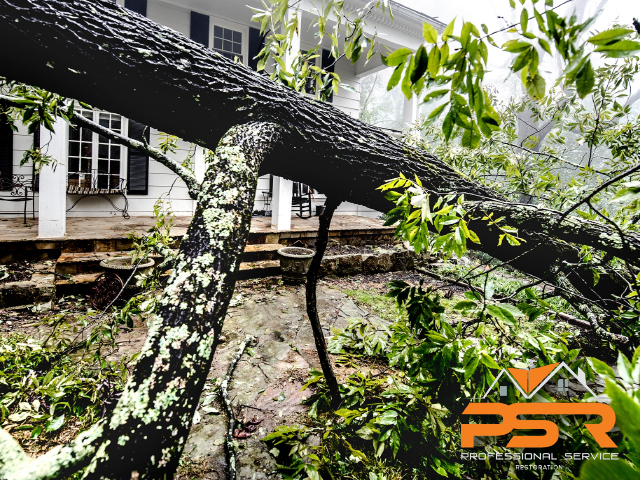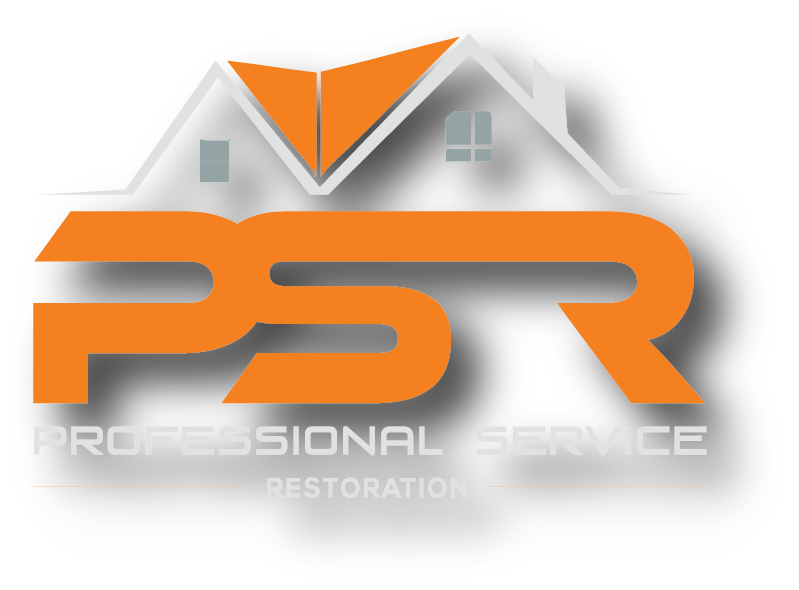
Storm Restoration | PSR Water Damage Restoration, a local company, specializing in expert property storm restoration services and more. Contact us today for complete customer satisfaction guaranteed.
Storm Restoration | Expert Service
Storms, with their powerful and unpredictable nature, can wreak havoc on buildings and landscapes. To achieve effective storm restoration, it is crucial to understand the mechanisms through which storms impact structures. This article will delve into the science behind storm damage, exploring the various ways in which storms can impact and compromise the integrity of buildings.
The Force of Wind
The force of wind stands out as one of the primary culprits behind structural damage during storms. Buildings face pressure from high-speed winds, leading to a range of issues. The force of the wind can cause roof damage, displace shingles, and even compromise the structural integrity of walls. Understanding wind patterns and their impact on different building materials is essential for assessing and addressing storm-related damage.
The Onslaught of Rain
Structures encounter their own set of challenges during heavy rainfall, a common companion of storms. Excessive rain can result in roof leaks, water intrusion, and flooding. Understanding the vulnerabilities in a structure’s waterproofing and drainage systems is crucial for mitigating water-related damage during storms. Proper storm restoration involves not only repairing visible water damage but also addressing potential hidden issues to prevent future complications.
Impact of Hail
Hailstorms, with their destructive potential, can cause damage to roofs, siding, windows, and other exterior elements. The severity of the impact depends on the size and velocity of hailstones. Inspecting and repairing hail damage requires a detailed assessment of the affected surfaces and the implementation of targeted restoration measures to ensure the structural soundness of the building.
Structural Stress and Deformation
Storms subject structures to significant stress and deformation. High winds, combined with other elements, can lead to bending, twisting, or shifting of building components. Identifying signs of structural stress is vital for preventing further damage and ensuring that the restoration process addresses both visible and underlying issues.
Lightning Strikes
The risk of lightning strikes, which can have severe consequences for structures, often accompanies storms. Beyond the immediate impact of a strike, such as fire or structural damage, lightning can also affect a building’s electrical systems. Ensuring a thorough inspection and restoration of electrical components is essential to prevent safety hazards and potential future issues.
The Importance of Timely Assessment
Effective restoration requires a timely assessment of storm damage. Engaging professionals to conduct a thorough inspection after a storm enables the identification of hidden damage and potential weak points that may lead to future issues. Swift action in the restoration process helps mitigate further damage and ensures the safety and resilience of the structure.
Understanding how storms impact structures is a cornerstone of effective storm restoration. From the force of wind and the onslaught of rain to the impact of hail and lightning strikes, each element requires careful consideration during the restoration process. By comprehensively addressing the various facets of storm damage, restoration professionals can ensure that buildings not only recover from the immediate effects of a storm but also withstand future challenges with resilience and strength.
Storm Restoration | Residential and Commercial
Services:
————————–
Storm Restoration
Mold Inspection
Mold Remediation
Water Damage
Storm Damage Repair
Flooded Basement Service
Fast 24/7 Service
Cutting Edge Equipment
Professional Team


Recent Comments